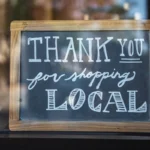One summer when I was much younger, I worked a temporary job at my local county fairgrounds. At the time, there were many old buildings in need of repair and a fresh coat of paint. My job was to paint the chicken barn. After listening to my supervisor explain how to prep the building prior to applying a coat of paint, I figured I should save myself a few days of work by “improving” the process.
My idea of improving was to skip some of the vital steps – like washing down the exterior walls for example. I had no patience and couldn’t see the benefit in doing that extra work. I wanted to get right to it and paint. Needless to say, I finished early and the building looked great… from a distance.
Creating an effective website is much like a painting gig. There is the painstaking work of getting to know exactly who your ideal customer is – and aligning to them. Learn how to talk to them and then go through the exercise of creating the experience you want them to have when they interact with your brand. The planning part of the project is just as important as the creating part.
Before a line of code is written, we will discover the colors that will support the experience you want to give your web visitor. Want to portray “Trust”? Try shades of blue (think Chase or Paypal). Want to portray passion or hunger? Try shades of red (think Coca cola, Target, or Time magazine). See how brands use colors to influence their customers in this blog post from Business Insider.
Fonts and icons too have deep psychological value that can either compel your web visitor to take action, or have them running in the opposite direction.
Creating a website is much like painting that chicken barn. You want something that is going to look good up close as well as from a distance, and to have the experience last. Doing the prep work lays a sustainable foundation for your web presence. Websites are a labor of love to bring your brand into the world. If there is one area to really invest your time, thought and energy, for your business, this is it. Your website will be a place where your ideal customer will want to visit and stick around for a while.
The chicken barn experiment really taught me a lot. It wasn’t long at all before the paint started peeling and the dirt and cobwebs returned. The next summer, there was a new crew out there scraping, sanding, fixing, washing, applying a coat of primer before the first coat of paint was applied. Each summer when I attend the county fair, I make it a point to stop by that chicken barn and inspect the building, appreciating all the steps put in place.








